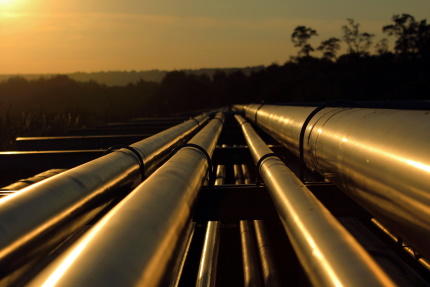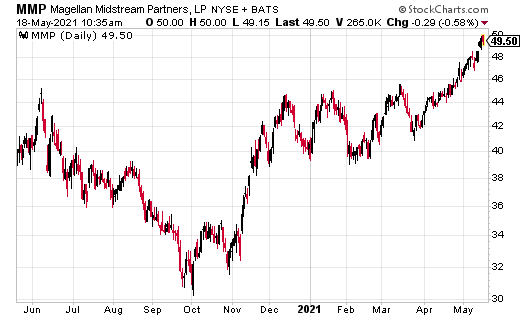Colonial Pipeline Shutdown Puts All Pipelines Back In Vogue
The ransomware attack and subsequent shutdown of the Colonial Pipeline drew a lot of awareness to how much our economy depends on fuels delivered by pipelines. Gas stations from the southeastern U.S. all the way up to New Jersey are out or will soon be out of fuel to sell. Airlines may not be able to fly due to a lack of fuel at East Coast airports.
Until last week, the Biden Administration was not very friendly toward pipelines. They believe(d) that shutting down pipelines would drive people towards EVs. What we now know is that shutting down pipelines can stop people from driving anywhere.
For the last six months, I have told my subscribers that the federal government’s antipathy towards pipeline projects makes existing, operating pipelines that much more valuable.
Here is how the U.S. Department of Transportation (DOT) describes pipeline systems’ major components, taken directly from their website:
- “Pipelines that collect products from sources, such as wells on land (gathering lines) or offshore, or from shipping, such as tankers for oil or liquefied natural gas (LNG). These systems move the product to storage, processing (such as treatment for gas or refining of petroleum).”
- “Transmission pipelines that transport large quantities of hazardous liquids or natural gas over longer distances; transmission lines deliver natural gas to distant power plants, large industrial customers and to municipalities for further distribution; petroleum transmission lines deliver crude oil to distant refineries or refined products to distant markets, such as airports or to depots where fuel oils and gasoline are loaded into trucks for local delivery.”
- “Distribution lines are a part of natural gas systems, and consist of main lines that move gas to industrial customers, down to the smaller service lines that connect to businesses and homes throughout a municipality.”
And one more quote from the DOT:
The nation’s more than 2.6 million miles of pipelines safely deliver trillions of cubic feet of natural gas and hundreds of billions of ton/miles of liquid petroleum products each year. They are essential: the volumes of energy products they move are well beyond the capacity of other forms of transportation. It would take a constant line of tanker trucks, about 750 per day, loading up and moving out every two minutes, 24 hours a day, seven days a week, to move the volume of even a modest pipeline. The railroad-equivalent of this single pipeline would be a train of 225, 28,000-gallon tank cars.
This information illustrates why I have energy midstream companies that own and operate pipelines and terminals on my recommendations lists. Our economy cannot function without these companies and their networks.
For one investment idea, consider Magellan Midstream Partners (MMP). This master limited partnership (MLP) operates a refined products-focused network of pipelines and storage terminals. Magellan Midstream units currently yield 8.7%, with upside potential from dividend increases and price appreciation.
Disclaimer: The information contained in this article is neither an offer nor a recommendation to buy or sell any security, options on equities, or cryptocurrency. Investors Alley Corp. and its ...
more




